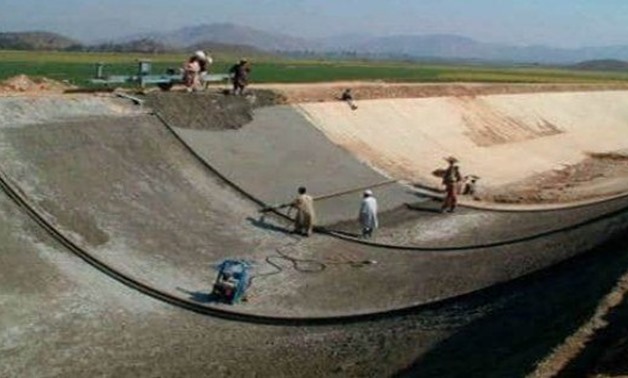
Canal lining – The Constructor website
CAIRO – 28 April 2020: As per President Abdel Fatah al-Sisi's decision to establish canals lining across the country in 2years instead of 10, the irrigation directorates in governorates, where Nile River water passes, have started setting executive plans and estimating costs.
Before the president's directives, the Ministry of Irrigation and Water Resources had targeted to complete,annually, the lining of 2,000 kilometers but the figure has to be raised now.
The total area to be lined is 20,000 kilometers out of 55,000 kilometers of canals derived from the Nile River in the Nile Valley and Delta. The lining project is estimated to save 5 billion cubic meters in seepage losses.
Some governorates have already set the budget and started the lining. Alexandria houses 20 canals, whose lining will cost LE60 million. In Upper Egypt's Qena, the lining of six canals - extending on 6kilometers - out of 220 canals has been completed. Three of those are located on the road connecting the governorate with Luxor.
Egypt's share of Nile River water is 55.5 billion cubic meters in addition to half a billion cubic meters of non-renewable subterranean water in the deserts.
In 2018, Minister Mohamed Abdel Ati stated that Egypt's water deficit stood at 30 billion cubic meters, and that the country needs 90 billion cubic meters of water per year to meet needs.
The deficit is overcome by recycling and importing certain goods along with expanding in desalination projects. North Sinai Governor Mohamed Shousha announced on April 7 that construction of the largest desalination plant in Africa and the Middle East has started.
The capacity of the first phase is 100,000 cubic meters daily, and that of the second and third phases is 300,000 cubic meters per day.
The annual water deficit in Egypt is 21 billion cubic meters. The gap is bridged through imports in the form of food, water recycling, and underground water. There is a need for further sustainable solutions to secure the water needs of agriculture, land reclamation, and citizens in border governorates.
On April 11, the ministry announced substituting the surface irrigation system in 7,476 feddans with the drip irrigation system at LE 183,739 million within a plan – set in 2018 - that targets 5million feddans.
Comments
Leave a Comment